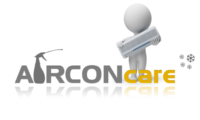![]() These days almost every household needs some form of air conditioning. Be it cold or hot weather. The greatest marvel that the Japanese gave the world was inventing the split ductless air conditioner. It is so compact, so energy efficient and low cost that most new homes are now pre-installed with it. Now we even have reverse cycle for heating as well. However, these devices are built so compact, cleaning them seems like a really daunting task. And cleaning them professionally can be ridiculously costly as well. The annual cleaning bill can be as high as 25%~35% of the cost of a new system. Hence, here is a set of DIY instructions for anyone who wants to do this correctly and get back the strong cool airflow like when it was brand new.
These days almost every household needs some form of air conditioning. Be it cold or hot weather. The greatest marvel that the Japanese gave the world was inventing the split ductless air conditioner. It is so compact, so energy efficient and low cost that most new homes are now pre-installed with it. Now we even have reverse cycle for heating as well. However, these devices are built so compact, cleaning them seems like a really daunting task. And cleaning them professionally can be ridiculously costly as well. The annual cleaning bill can be as high as 25%~35% of the cost of a new system. Hence, here is a set of DIY instructions for anyone who wants to do this correctly and get back the strong cool airflow like when it was brand new.
You must get an aircon wash bag. It is a custom bag designed as a waste water catchment that you wear around the split ac unit (called an FCU-Fan Coil Unit) that is on the wall. This way you do not need to tear the system down like professionals do.
- Buy a good coil cleaner - I try to avoid the foam type coil cleaners because they can be messy and the foam spreads everywhere. If not done properly, the foam may not penetrate the coils properly. Also, these foam sprays are not designed to clean the rotor fan blades properly as well. So I would stick to liquid solution sprays. Now coil cleaner selection is critical. Especially if you have the newer split air conditioners that come with their cooling coils coated with a hydrophilic layer (Keeps the condensate water flowing over the coils easily to improve airflow strength. You can always tell because the coils tend to be blue in color due the epoxy coating of the hydrophilic coating. Most coil cleaners in the market are designed to attack organics. And what's worst is ac services tend to use strong caustic or acidic chemicals in their cleaning due to their lower costs. Unfortunately, these chemicals tend to destroy this coating. Try to find one that is certified and tested free of cyto-toxic or VOC's (Volatile Organic Chemical) residue left behind after cleaning.
- Start spraying the chemical solution over the coils. Try to spray at an angle onto the cooling fins surface as well as directly into the coils. Make sure the solution can reach as far into the coils as possible. One good suggestion is to put the nozzle as close to the fins as possible.

- Next Spray the rotary blades hidden in the outlet of the airflow. To get good results, you will need to reach have a far reaching spray nozzle much like those of the pressure garden sprayer. Make sure to coat all the blades with the cleaning solution.
- Wait 5 minutes for the cleaning solution to work. Then flush the coil and rotary blades with water sprayers and see all the dirt and grime flow into the aircon wash bag. Note: some of the water from the coils will flow via the drainpipe.
Tips
* Use the long reach nozzle or a toothbrush to push the rotary blades round to get at all the blades.
* If your sprayer is strong enough, the pressure alone will cause the blades to rotate if you focus the spray on the lower third of the rotor facing you.
* A used tooth brush can be very useful in dislodging and scrubbing some of the stubborn spots on the coils and everywhere else, especially areas near the airflow outlet.
* Be gentle and try not to exert too much pressure when brushing the cooling fins. They do bend and collapse easily under too much force.
* Before you begin, you could remove the drain plug from the drip tray in your aircon unit so allow all the dirt to drain into the wash bag instead. This can avoid letting too much dirt flowing into the drainpipe.
* To avoid choking drainpipe, you should spray some coil cleaning solution into the drainpipe. Then flush water down the drainpipe. If you can locate the other end, use a wet shop vac if you have one to suck out and clear the drainpipe. This should be done especially if you have a leaking aircon.
Warnings
- Turn OFF the mains power supply breakers to the air conditioner unit, including the compressor before you start this cleaning process.
- Avoid spraying any solution on the right side where the electronics are at.
- There are lots of coil cleaners that recommend leaving their chemical solution on the coils and let the condensate clean and flush it away. I advise against following these instructions. Firstly, the flushing action allows you to remove the tons of trapped dirt in your air conditioners. Secondly, leaving cleaning chemicals on the coils give rise to VOCs (Volatile Organic Chemicals) which are usually not healthy for our respiratory system even if they are organically natural products. Long term exposure to breathing such concentrations that are strong enough to clean is not advisable.

